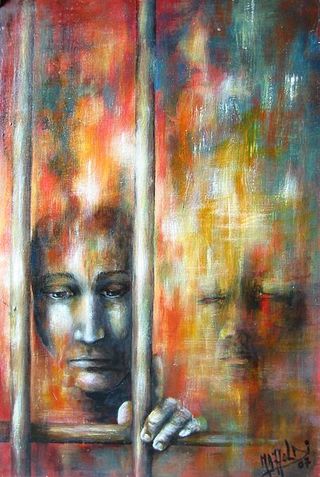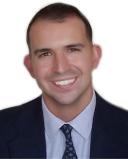Depression
Revisiting the Concept of Reactive Depression
For years, psychiatrists distinguished between reactive and chemical depression.
Posted July 13, 2019 Reviewed by Davia Sills
Depression is commonly referred to as the "common cold" of psychiatry due to its high prevalence and widespread economic burden. It is estimated that 10 percent or more of patients in primary care settings have depressive illness, and its annual economic burden in terms of lost productivity is estimated to be around $200 billion in the United States alone (Greenberg, Fournier, Sisitsky, Pike, & Kessler, 2015). However, unlike the common cold, depression is often a chronic illness leading to profound impairment and disability. Thus, some have suggested that perhaps a better metaphor for major depression is diabetes.

In the 1980s and early 1990s, psychiatrists and other mental health professionals deemed it to be important to differentiate depression based on its likely cause. Reactive or exogenous depressions were likely caused by some external factor—most commonly, in the psychoanalytic theory, by a loss of a loved person or object. Exogenous depressions are sometimes termed "situational depressions" and could be triggered by the death of a family member, the loss of a job, financial strain, medical illness, etc. The patient with an exogenous depression is almost always able to identify the reason or reasons they have become depressed, and the onset of the depression coincides neatly with the environmental situation or trigger.
In contrast, endogenous depressions were those deemed to be unrelated or only partially related to the patient's life circumstances. Often termed metabolic or biological depressions, these depressions seem to "come out of the blue," are more cyclical in their nature, and often more severe than an externally caused reactive depression. The patient with endogenous depression often has a family history of depressive illness or suicide, falls depressed even when things around them seem just fine, and is usually unable to identify any trigger for their melancholic periods. These depressions, it seems, just "feel" more organic in their nature. They were deemed to be caused by biochemical abnormalities of the brain.
Ronald Fieve, the psychiatrist best known for introducing lithium carbonate to the United States in the mid-20th century, believed distinguishing depression on the basis of its cause to be of chief importance in determining the best course of treatment (Fieve, 1989). And he was not alone: Most psychiatrists of his era believed the same. The argument was that exogenous depressions—those caused by the unfortunate realities of life—were best treated with psychotherapy or psychoanalysis and that endogenous or biological depressions were best treated with pharmacotherapy or other biological treatment. Reactive depressions, it was believed, would not respond very well to medication treatment, because their causes were not organic.
This distinction between endogenous and reactive depression was scrapped in the 1990s, and most psychiatrists and mental health professionals today don't use these terms at all. When I was going through my graduate school and internship training in the 2000s, these concepts were never taught. As the SSRI drugs became increasingly popular and widespread in their use (beginning with the introduction of Prozac in 1988), there seemed to be no need for the clinician to investigate the potential cause of the depression—the SSRIs seemed to work on everyone.
The argument against distinguishing depressions on the basis of their etiology is that all human mood and behavior is mediated by the brain and that all depressions, regardless of their believed cause, are rooted in neurobiology. To some extent, the discovery of the role of the monoamine neurotransmitters in depression (and the effectiveness of the SSRI drugs) led to the abandonment of the theory of reactive depression. Around the same time, the popularity of psychoanalysis within psychiatry was waning, and psychosocial theories of illness were rapidly replaced by theories which readily incorporated the biological, e.g., George Engel's biopsychosocial theory.
What has been the result of this shift in thinking about the cause of depression? In short, people who previously would have been referred for psychotherapy are now being started on antidepressant medications (which often do work, but come with side effects and may not be the best option for someone who wishes to process and work through their loss or other stressors). Even mild depressions—those that pioneering psychopharmacologists like Fieve would never have considered treating with medication—are now being treated pharmacologically. (It is noteworthy that many psychiatrists of his generation were initially trained in psychoanalysis and thus believed in the value of talk therapy, even if they later became psychopharmacologists.)
Yet, there has been growing recognition that a solely pharmacological approach has its limitations, and many of the psychiatry residents I have taught have a great interest in incorporating psychotherapy into their future practices. I believe that we are in the midst of another paradigm shift within the field towards a more comprehensive psychiatry incorporating the best of both biological and psychological approaches.
Certain types of depressed patients appear to be more adequately suited for a psychotherapeutic approach, chiefly those patients who are psychologically-minded, self-expressive, can identify with good certainty the cause of their depression, and those with good functioning prior to the onset of the illness. These patients tend to be those who previously would have fallen into the category of reactive depression. For these patients, it has been my experience that a psychotherapy-based approach is more effective than pharmacotherapy, with some exceptions.
Of course, a major limitation of the endogenous vs. reactive depression distinction is the possibility that, for some patents, adverse life events are merely coincidental, and the individual would have become depressed regardless of any external events. Also, it is true logically that no depression exists independent of one's neurobiology and neurochemistry. It could also be the case that the external events merely trigger an underlying, physiological depression.
Psychoanalytically, it is possible for the psychological cause of an apparent endogenous depression to be hidden and to be made sense of in analytic treatment (e.g., introjective depression caused by an early critical other or anaclitic depression marked by the need for connection and closeness).
Nevertheless, there may indeed be a proper place for considering the likely cause of a patient's depression. Rather than using it as a hard and fast rule (as was done in the past), the exogenous vs. reactive depression distinction could be considered as one variable in determining the best course of treatment.
References
Fieve, R. (1989). Moodswing: The eminent psychiatrist who pioneered the use of lithium in America reveals a revolutionary new way to prevent depression. New York: Bantam Books.
Greenberg, P. E., Fournier, A. A., Sisitsky, T., Pike, C. T., & Kessler, R. C. (2015).The economic burden of adults with major depressive disorder in the United States (2005 and 2010). The Journal of Clinical Psychiatry, 76(2), 155-162.




